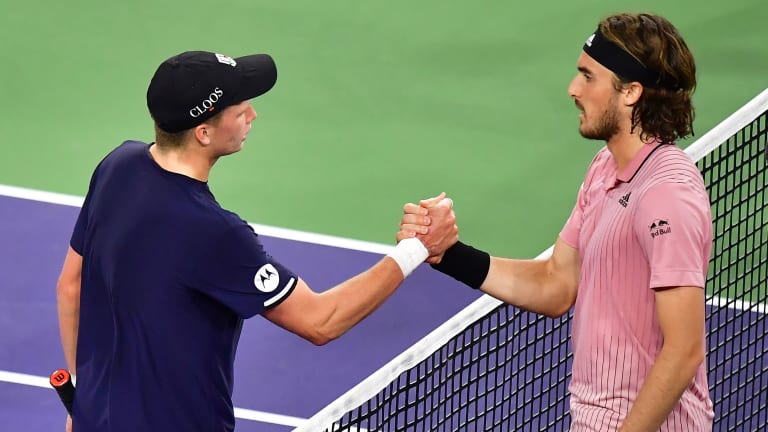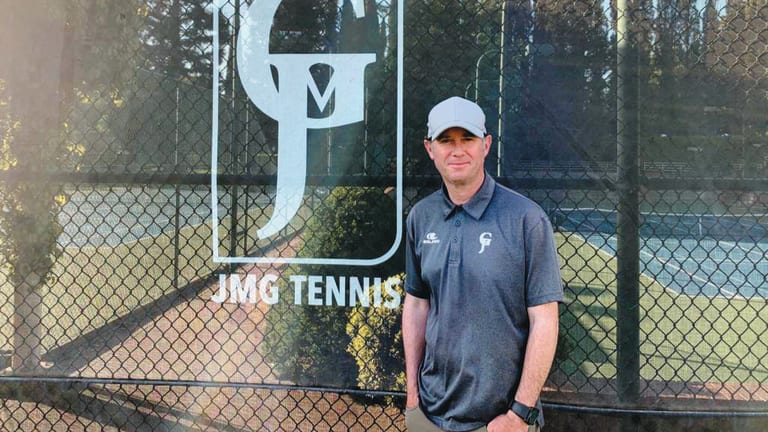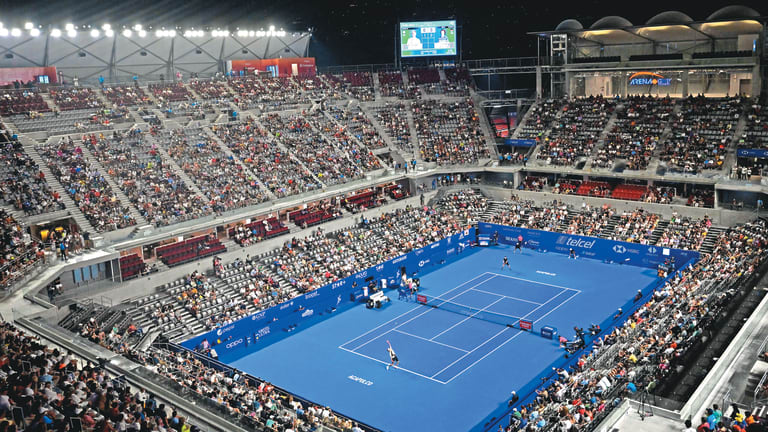Gilbert told journalist Paul Bauman that he first spotted a five-year-old Jenson Brooksby hitting against a wall at a club. He could see the kid had competitive spirit; rather than just practicing his swing, the first-grader looked like he was battling an imaginary opponent.
“JT was actually behind the curve on things like size, speed and coordination,” Gilbert says of Brooksby. “But he loved to play, he could focus for hours, and he had good hands.”
Focus, competitiveness, hands: That was enough for Gilbert. Where many in the player-development business see athleticism as destiny, Gilbert thinks tennis is a skill sport at its core, and with repetition, most skills can be learned. You can’t teach speed, but you can teach footwork; you can’t teach power, but you can teach a player to use angles and absorb pace.
“Size and speed matter, 100 percent they matter,” Gilbert says, “but how does someone like David Ferrer beat Gael Monfils?”
Brooksby was the perfect fit for Gilbert’s patience- and pattern-based philosophy; it also didn’t hurt that he later sprouted to 6’4”. Amazed by the long-running dominance of the Big Three, Gilbert studied their games and tried to transplant what he could into the young American’s style.
“The thing about those guys to me was that they don’t really have weaknesses,” Gilbert says. “That was our goal for JT: To have zero weaknesses.”
Brooksby didn’t leave home for an academy, mostly stayed away from USTA programs, and rarely traveled to international junior events. While other promising U.S. juniors have banded together and formed an informal fraternity, Brooksby, who plays piano in his spare time, went his own way.
“Some of the guys, they’re really cool guys,” Brooksby says of his countrymen. “They’re nice. We talk once in a while. But I don’t follow [their] scores or anything in general, other than myself.”
Instead, with daily lessons and basket-fed drills, he and Gilbert developed their own goals and maxims. Compete for every point. Stick with your patterns. Exploit weaknesses. Pay attention to details. Implement the right play over and over. Play the percentages over time.
“It’s not about power for me,” Brooksby says. “It’s more about learning to hit each shot, getting the little details right, and executing what we work on in practice each day.
“Our mindset is different. Joe keeps it simple, and we really try to learn as much as we can from every match. It’s about hitting the right shot at the right time.”




